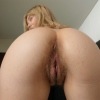Sepheyer
Well-Known Member
- Dec 21, 2020
- 1,721
- 4,216
- 499
I love hand drawn stuff too.You mentioning hand drawn stuff reminded me of some images i got quite a while ago. I was running prompts of descriptions of fictional places, and for some reason this is the "style" and look the AI decided to give when using various descriptions of Rivendell. While maybe not hand drawn it reminds me of old book illustrations and that kind of thing.
View attachment 3168298 View attachment 3168299
These are Doomer Boomer checkpoint which is hot AF:
You must be registered to see the links
And I think here is what the checkpoint was actually meant for:
Last edited:




































